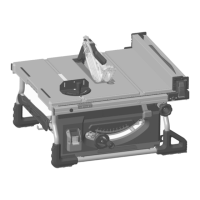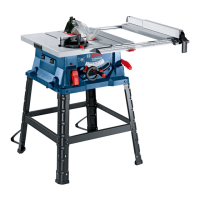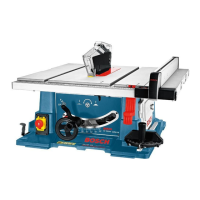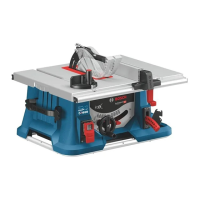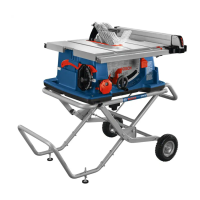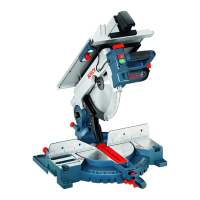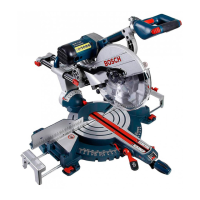Page
Changing The Blade ............... 14-15
Attaching The Rip Fence for Use
& Storage .......................... 16
Mounting Table Saw to Workbench ......... 16
Adjustments ........................ 17-21
Adjusting 0 & 45 Degree Positive Stops...17
Adjusting Blade Parallel to the
Slot Miter Gauge ..................... 18
Aligning Rip Fence ................... 19
Rip Fence Pointer Adjustment .......... 19
Table Pointer Adjustment .............. 20
Adjusting Riving Knife .............. 20-21
Adjusting Table insert ................. 21
Basic Table Saw Operation ............ 22-34
Safety Power Switch .................. 22
Smart Guard System .............. 22, 23
Blade Bevel Control .................. 24
Extending Table Extension ............. 24
Using Rip Fence Pointer ............... 24
Page
Using Table Pointer ................... 24
Work Helpers ........................ 25
Using the Miter Gauge ................ 26
Crosscutting ........................ 27
Repetitive Crosscutting ................ 28
Miter Cutting ........................ 28
Bevel Crosscutting ................... 28
Compound Miter Cutting ............... 28
Using the Rip Fence ............... 29, 31
Ripping ............................ 30
Non Thru-Sawing .................... 31
Rabbeting .......................... 31
Dadoing Cutting ................... 32-33
Maintaining Your Table Saw ............... 34
Clearing Dust Chute/Scoop ............ 34
Lubrication .......................... 35
Accessories ........................... 35
Trouble Shooting ....................... 36
G ossarvTerms
WORKPIECE
The item on which the cutting operation is being per-
formed. The surfaces of a workpiece are commonly
referred to as faces, ends and edges.
ANTI-KICKBACK PAWLS
Device which, when properly maintained, is de-
signed to stop the workpiece from being kicked back
at the operator during operation.
ARBOR
The shaft on which a cutting tool is mounted.
BEVEL
Blade angle relative to the table surface.
CROSSCUT
A cutting or shaping operation made across the
width of the workpiece cutting the workpiece to
length.
DADO
A non-through cut which produces a square sided
notch or trough in the workpiece.
FEATHERBOARD
A device which can help guide workpieces during rip
type operation by keeping workpiece in contact with
the rip fence. It also helps prevent kickback.
FREEHAND
Performing a cut without a fence, miter gauge, fix-
ture, hold down or other proper device to keep the
workpiece from twisting during the cut.
GUM
A sticky, sap-based residue from wood products.
After it has hardened, it is referred to as "RESIN'.
HEEL
Misalignment of the blade which causes the trailing
or outfeed side of the blade to contact the cut sur-
face of the workpiece. Heel can cause kickback,
binding, excessive force, burning of the workpiece
or splintering. In general, heel creates a poor quality
cut and can be a safety hazard.
KERF
The space in the workpiece where the material was
removed by the blade.
KICKBACK
An uncontrolled grabbing and throwing of the work-
piece back toward the front of the saw during a rip
type operation.
-7-

